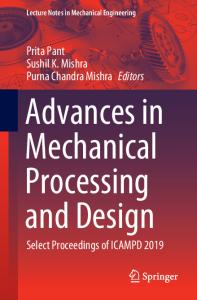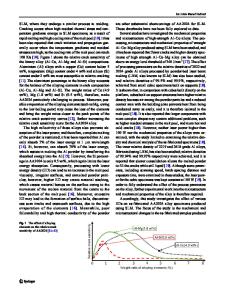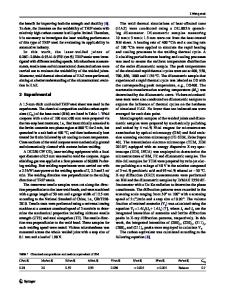The effect of laser welding modes on mechanical properties and microstructure of 304L stainless steel parts fabricated b
- PDF / 5,223,119 Bytes
- 11 Pages / 595.276 x 790.866 pts Page_size
- 38 Downloads / 267 Views
ORIGINAL ARTICLE
The effect of laser welding modes on mechanical properties and microstructure of 304L stainless steel parts fabricated by laser-foil-printing additive manufacturing Chia-Hung Hung 1
&
Wei-Ting Chen 2 & M. Hossein Sehhat 1 & Ming C. Leu 1
Received: 22 September 2020 / Accepted: 18 November 2020 # Springer-Verlag London Ltd., part of Springer Nature 2020
Abstract The success of laser-foil-printing (LFP) additive manufacturing depends critically on the laser welding of sheet metals onto the substrate or the previous layer during the part fabrication process. The welding can be generally categorized into two modes: conduction mode and keyhole mode. In this study, 304L stainless steel parts fabricated by the LFP process using the two laser welding modes are compared. The porosity, microstructure, and tensile properties of the fabricated parts in these two modes are measured and compared in the laser scanning direction (X) and part building direction (Z). The parts fabricated in the conduction mode have a higher density than those fabricated in the keyhole mode. On the tensile properties, both yield strength (YS) and ultimate tensile strength (UTS) have insignificant differences statistically based on the ANOVA analysis between the tensile specimens fabricated with the two welding modes by the LFP process. However, the conduction-mode parts have higher elongation than the keyhole-mode parts in both the X and Z directions, and the difference is especially significant in the Z direction. By using the electron backscattered diffraction (EBSD), it was found that the much higher ductility for the conductionmode parts in the Z-axis direction is mainly due to the distinct grain boundary interface density in the Z-axis direction between the two welding modes. Keywords Laser foil printing . Metal additive manufacturing . 304L stainless steel . Laser welding modes . Mechanical properties
1 Introduction The laser welding process has been widely used to fabricate metallic components for applications in aerospace, automotive, and other industries [1, 2]. Besides joining of parts, laser welding could also be used in additive manufacturing processes [3, 4]. The laser welding process uses a high power laser to heat up and melt two contiguous or lapped metallic pieces, creating a sound bonding between similar [5, 6] or dissimilar [7, 8] materials. Depending on laser power density and scanning speed, the laser welding mechanism may change from
* Chia-Hung Hung [email protected] 1
2
Department of Mechanical and Aerospace Engineering, Missouri University of Science and Technology, Rolla, MO 65409, USA Materials Research Center, Missouri University of Science and Technology, Rolla, MO 65409, USA
conduction-mode welding (where laser energy is absorbed through the object’s surface) to keyhole-mode welding (where laser energy is absorbed through Fresnel absorption and reflection) [8]. The former reflects ~ 60% of incident laser beam energy at the wavelength of 1.06 μm [9], while the latter can absorb nearly all the laser
Data Loading...











